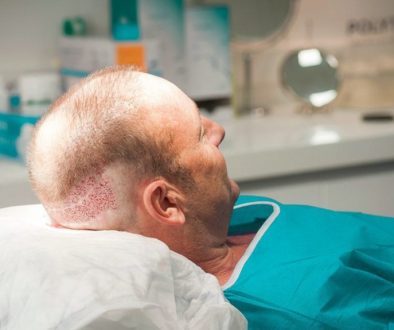Are Hair Transplant Megasessions Safe?
This insightful information was posted on our hair restoration forum by Dr. Timothy Carman who is a member of the Coalition of Independent Hair Restoration Physicians. His professional answer is below.
Many hair restoration doctors don’t perform hair transplant megasessions and they appear to be limited to do only 3500 grafts or maximum 4000 grafts. The few doctors that do perform megasessions go up to 5000 grafts plus. What’s the reason for this? Are megasessions unsafe due to limited blood supply? I know doctors recommended on the Hair Transplant Network do perform megasessions and their patients have great results, but why do other doctors limit themselves?

In general, the maximum amount of donor grafts available in any one hair transplant session is dependent upon three factors:
1) The patient’s hair density in the donor area;
2) The length of the strip removed; and
3) The width of the strip removed.
Number one, the patients density (average = 100 FU/cm2), is what it is- this factor is beyond the surgeons/clinics control. If this number is 110 or 120 FU/cm2, the total amount of potential grafts available can dramatically increase.
Number two, the length of the incision, is limited by the size of one’s head and the relative hair density of the hair on the sides of the head. How far the incision is extended up the sides is an area where one needs to not only observe a patient’s density at the time of surgery, but also (especially in the younger patient) the anticipated thinning hair that may be in the future based on the patients genetic (family) history and hair loss pattern to date. This is critical, as, a cavalier approach for the sake of “getting big numbers” may backfire in ten years if the patient thins on the sides, revealing the incision scar.
The third factor, the width, is the area where most of the “controversy” comes into play. 1 cm? 1.5 cm? 2.0 cm? 3.0 cm? In my opinion, as a surgeon, this is an area where it is critical to know when “enough is enough”; closing a wound under “too much” tension is where one will get into some serious scarring issues. There is no sense in creating a great lawn of recipient grafts at the expense of a bad scar that needs future attention. It has been shown that pre-operative scalp stretching exercises can increase the laxity of the donor area, affecting the amount available at the time of surgical hair restoration. We recommend that our patients do these routinely prior to surgery.
Of course, there are other design/planning issues that go into the size of the session. For example, given the age of the patient and his hair loss pattern and family history, it may be advisable to begin with a “smaller” session of 2000 grafts to recreate a more conservative hairline and reinforce the frontal forelock, while buying time to see how the patients ongoing hair loss progresses, so that more prudent use of his grafts can be made in the future.
Overall, a point I stress at my consultations is that, in my honest opinion, in plastic/cosmetic surgery “one size does not fit all”, and, accordingly, the surgical plan and design should be tailored individually, to address the individual’s needs and goals. Ultimately, the goal should be a natural, undetectable transplant that will stand the test of time.
Dr. Timothy Carman
—
Bill Seemiller
Associate Publisher/Editor
Technorati Tags: hair restoration, hair transplant megasessions, hair transplant, hair density, thinning hair, hair loss pattern




September 29, 2009 @ 12:12 pm
Health Lifestyle,
There are rare but some reported cases of less than optimal growth for unknown reasons. This is what’s referred to as the “X-Factor” in hair transplant surgery. This refers to an unknown variable or set of variables responsible for less than optimal growth. For what reason the grafts were rejected in these cases remain unknown. However, in the vast majority of patients who choose a reputable highly esteemed hair transplant surgeon, hair growth is excellent.
If you are considering hair transplant surgery, do take your time to research and learn all about the procedure, its benefits, limitations, and potential risks.
Best wishes,
Bill Seemiller
Associate Publisher/Editor
September 28, 2009 @ 11:33 pm
Is there any graft rejection chances or not in doing this?